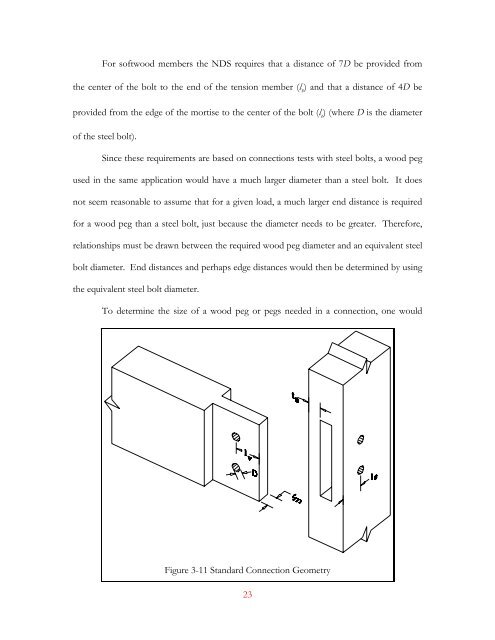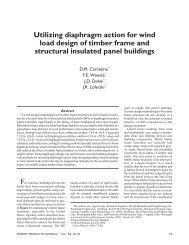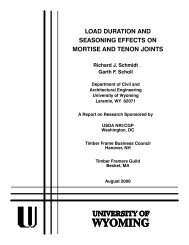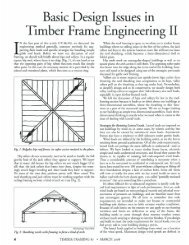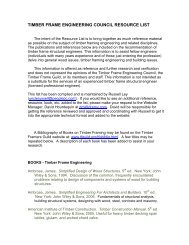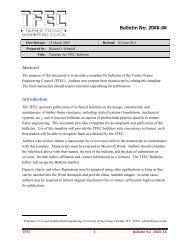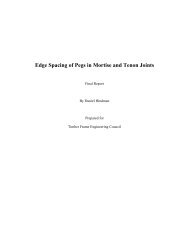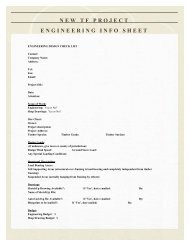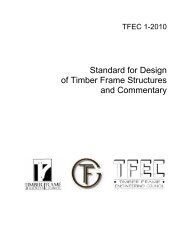Timber Frame Tension Joinery - Timber Frame Engineering Council
Timber Frame Tension Joinery - Timber Frame Engineering Council
Timber Frame Tension Joinery - Timber Frame Engineering Council
You also want an ePaper? Increase the reach of your titles
YUMPU automatically turns print PDFs into web optimized ePapers that Google loves.
For softwood members the NDS requires that a distance of 7D be provided from<br />
the center of the bolt to the end of the tension member (l v ) and that a distance of 4D be<br />
provided from the edge of the mortise to the center of the bolt (l e ) (where D is the diameter<br />
of the steel bolt).<br />
Since these requirements are based on connections tests with steel bolts, a wood peg<br />
used in the same application would have a much larger diameter than a steel bolt. It does<br />
not seem reasonable to assume that for a given load, a much larger end distance is required<br />
for a wood peg than a steel bolt, just because the diameter needs to be greater. Therefore,<br />
relationships must be drawn between the required wood peg diameter and an equivalent steel<br />
bolt diameter. End distances and perhaps edge distances would then be determined by using<br />
the equivalent steel bolt diameter.<br />
To determine the size of a wood peg or pegs needed in a connection, one would<br />
Figure 3-11 Standard Connection Geometry<br />
23


